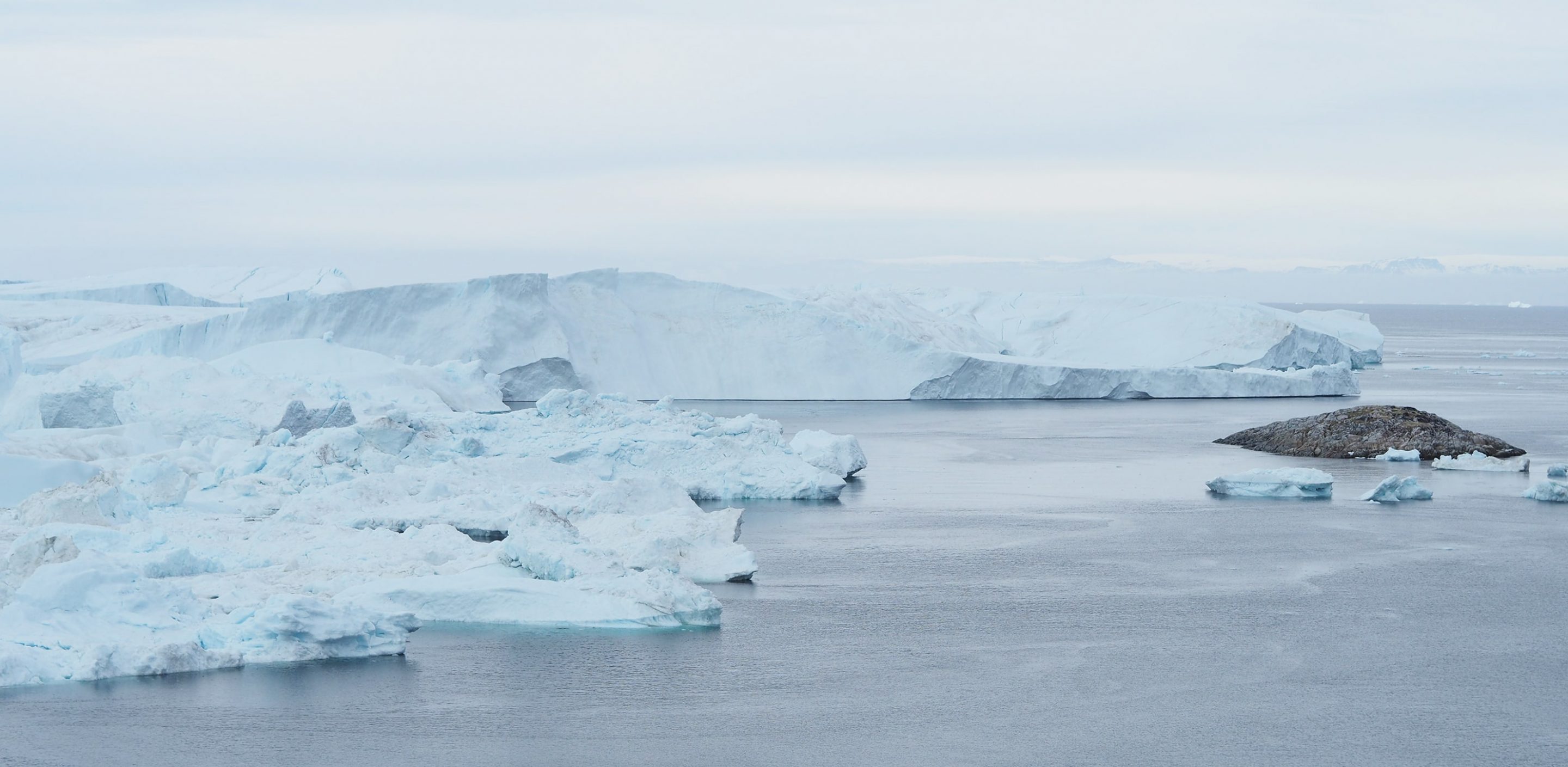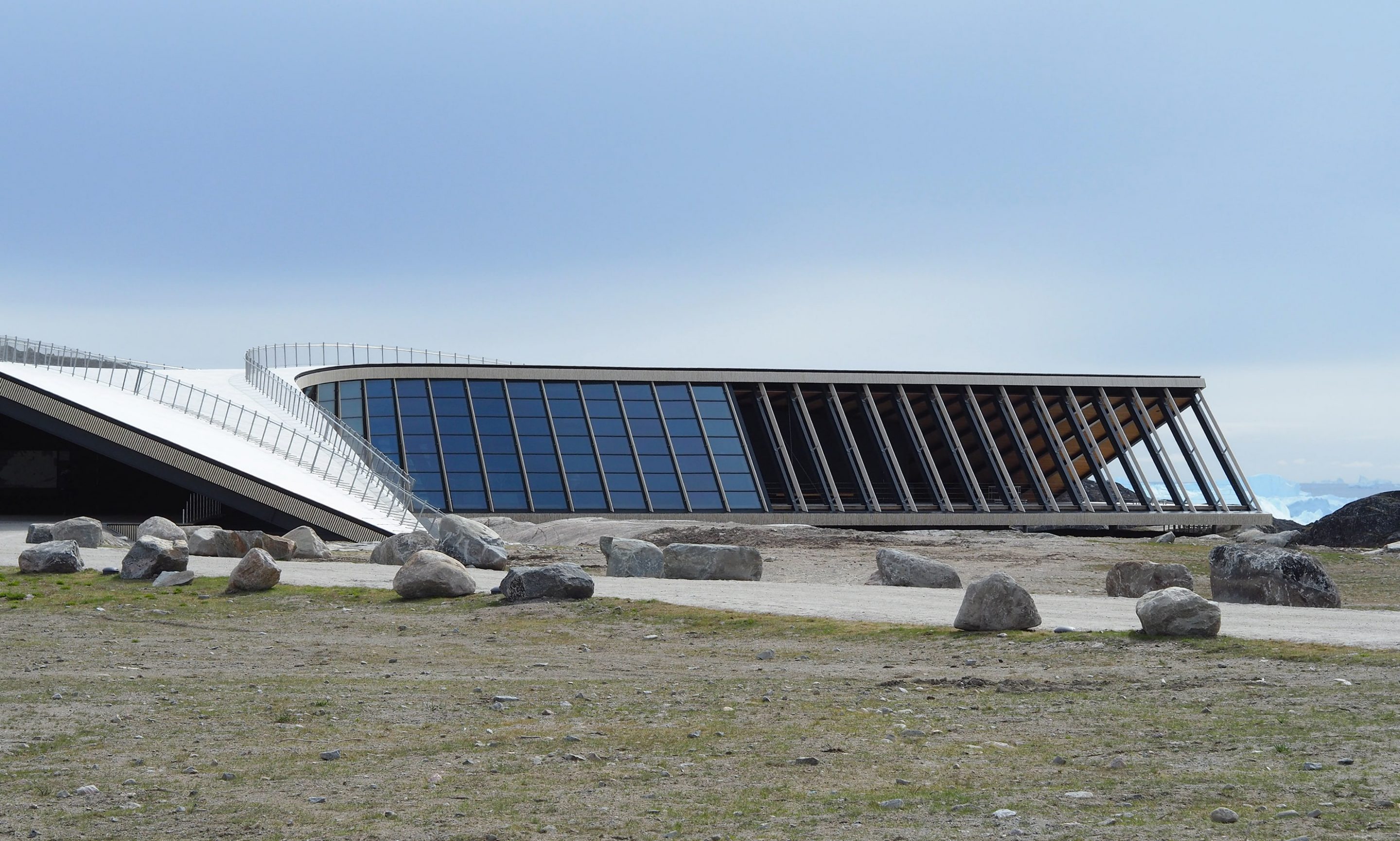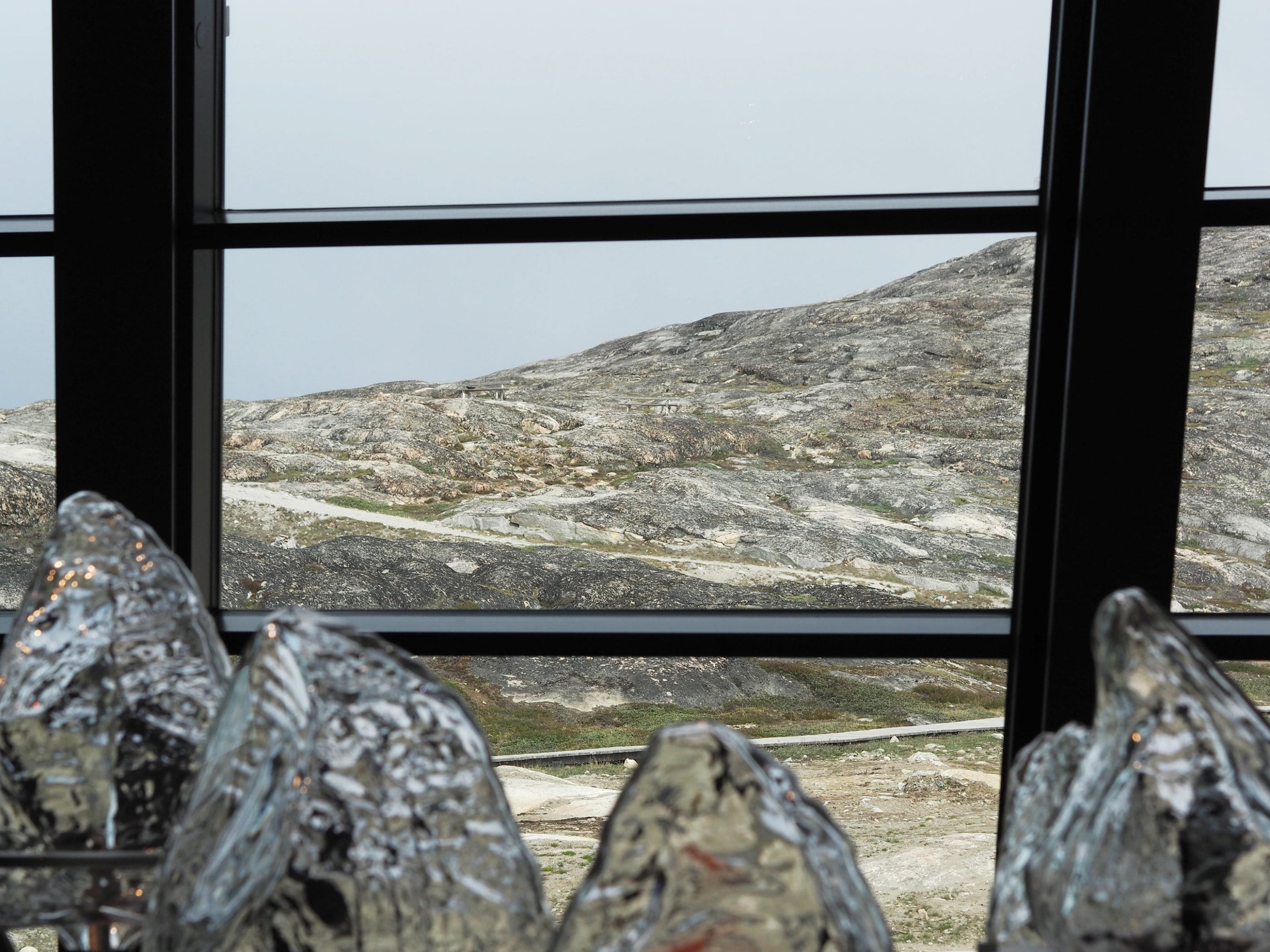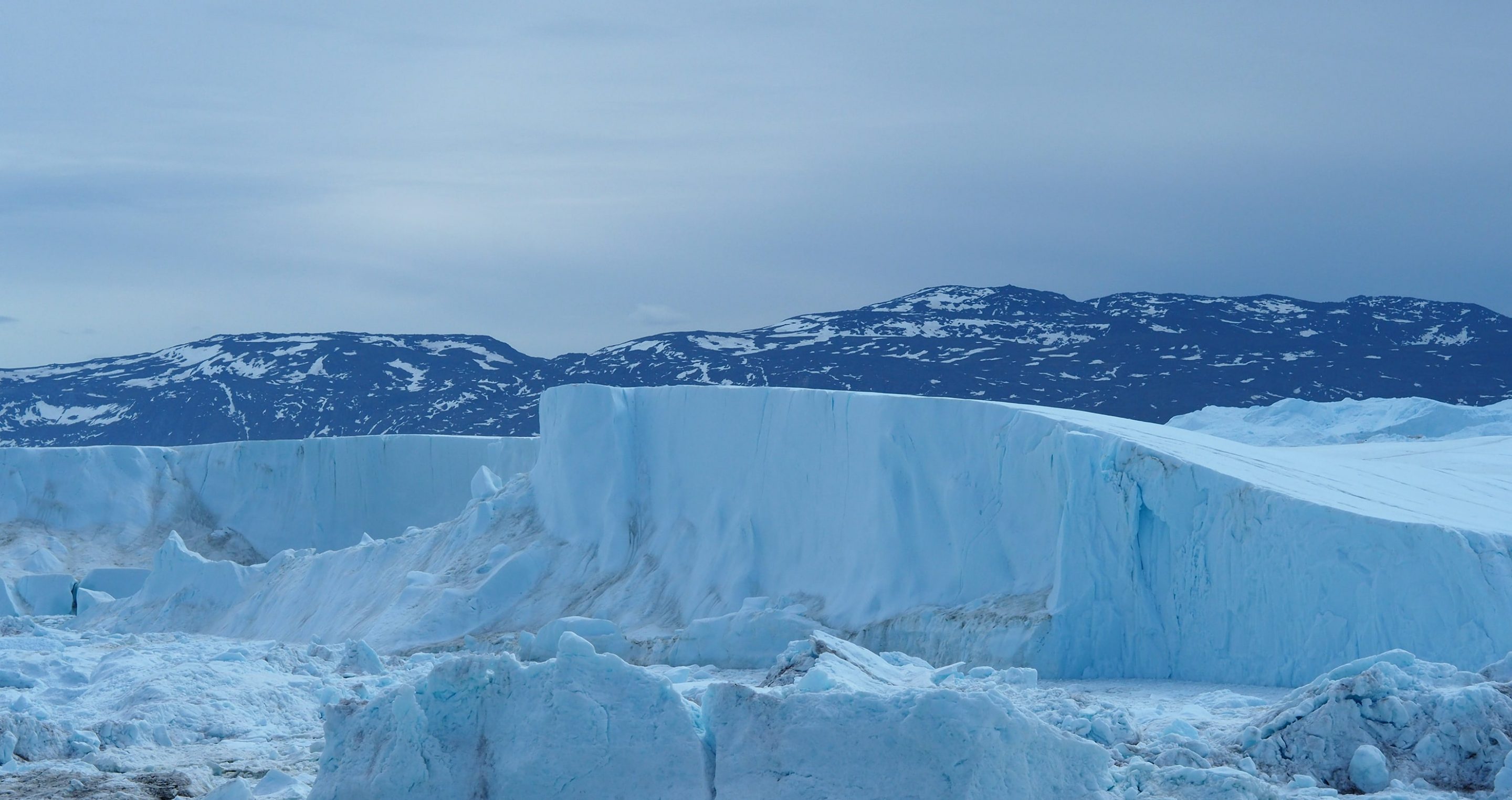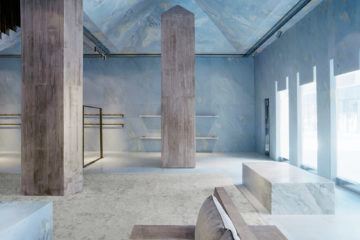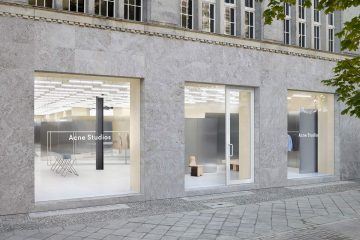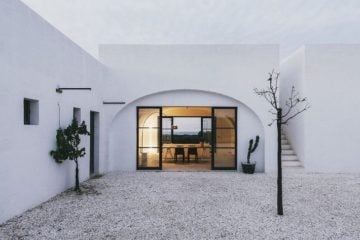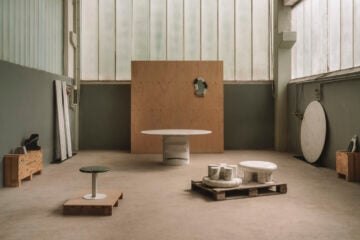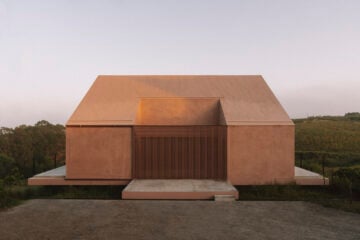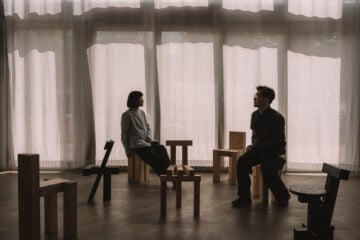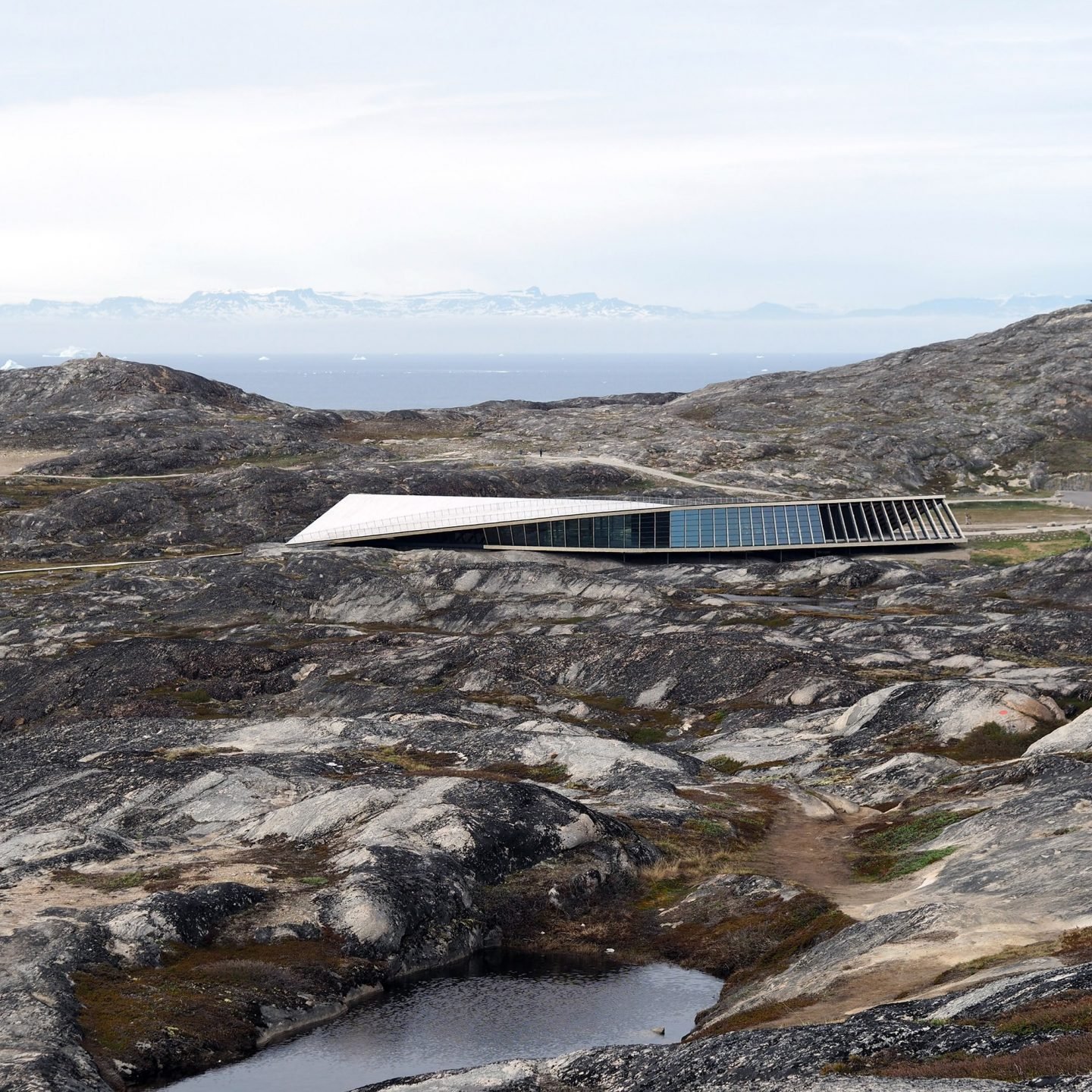
In Greenland, The Staggering Ilulissat Icefjord Centre Brings Architecture, Nature, And Community Together
- Name
- Ilulissat Icefjord Centre
- Images
- Devid Gualandris
- Words
- Devid Gualandris
Since the summer of 2021, a wing-shaped, wood-clad building can be found peeking out of the rocky landscape of the Greenlandic town Ilulissat. This is the Kangiata Illorsua–Ilulissat Icefjord Centre—a project unique in its scale and scope, which aims to celebrate nature, community, and life on the ice in this strikingly beautiful part of the Arctic. During our visit to Greenland with Realdania earlier this summer, we discovered how one such ambitious project can offer visitors and locals alike a new perspective of the town and, by extension, of Greenland.
The third-largest human settlement in Greenland, after Nuuk and Sisimiut, Ilulissat is an undiscussed treasure trove of beauty, home to a myriad of natural wonders and a population of less than 5,000. Here, people are few but with a distinct local identity—one deeply tied to the town’s physical surroundings and intimately intertwined with the presence of ice, its rhythms, and changes. The town’s inhabitants travel on dog sleds, and fishing and hunting play a central role in community life (one in three is a fisherman or employed in the fishing industry). Since the town’s establishment in 1741, the harsh climate has forced its residents to learn to adapt, making them pivotal to the area’s growth and natural preservation. And this to significant effect. Today, Ilulissat is Greenland’s number one tourist destination with tourism becoming the town’s principal industry. Every year, around 30,000 nature lovers and curious minds travel to this unspoilt settlement to get hypnotized by the towering landscape formations of the Ilulissat Icefjord and observe the massive icebergs floating out in the open sea, hoping to catch a whale’s tale amid the wonderment.
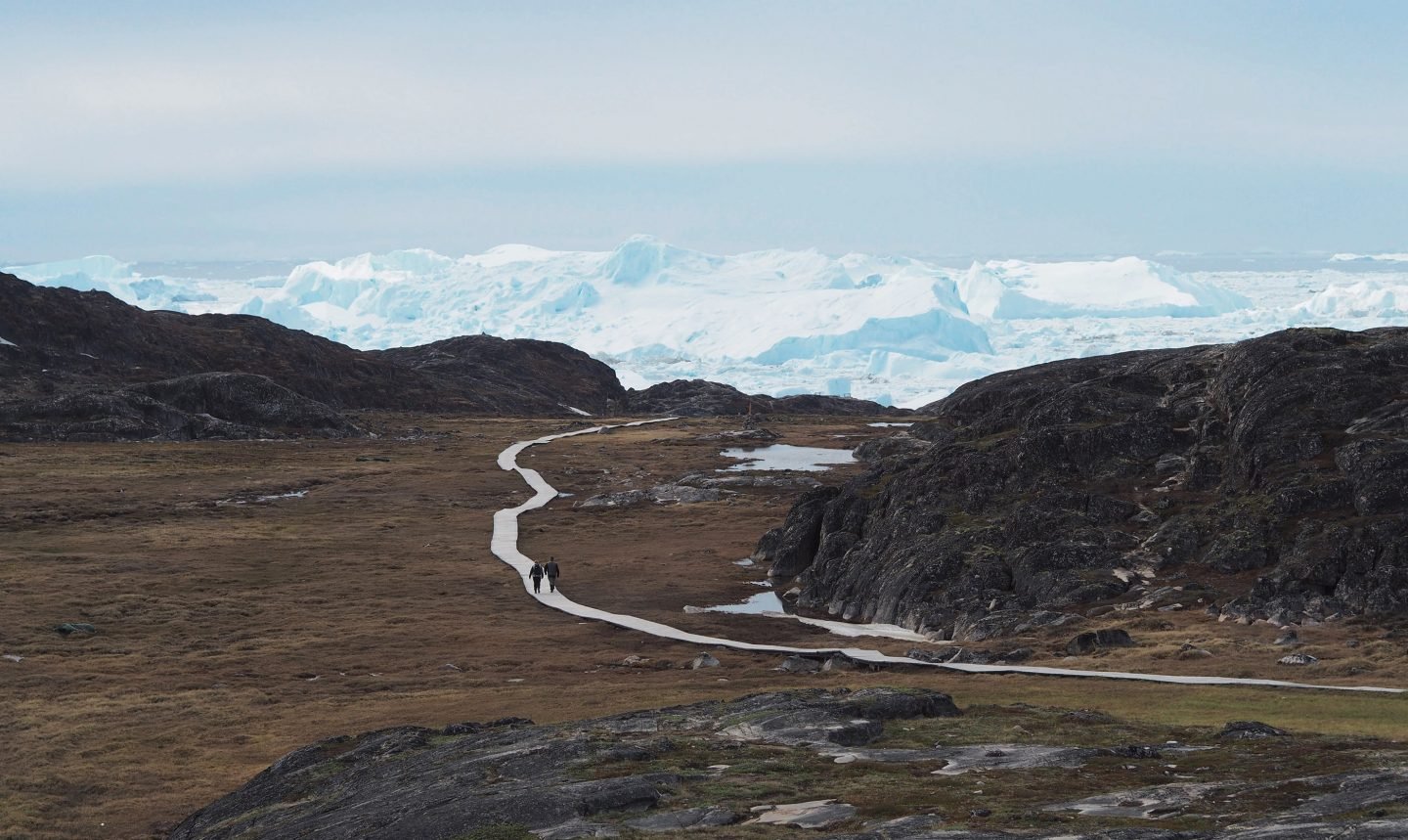
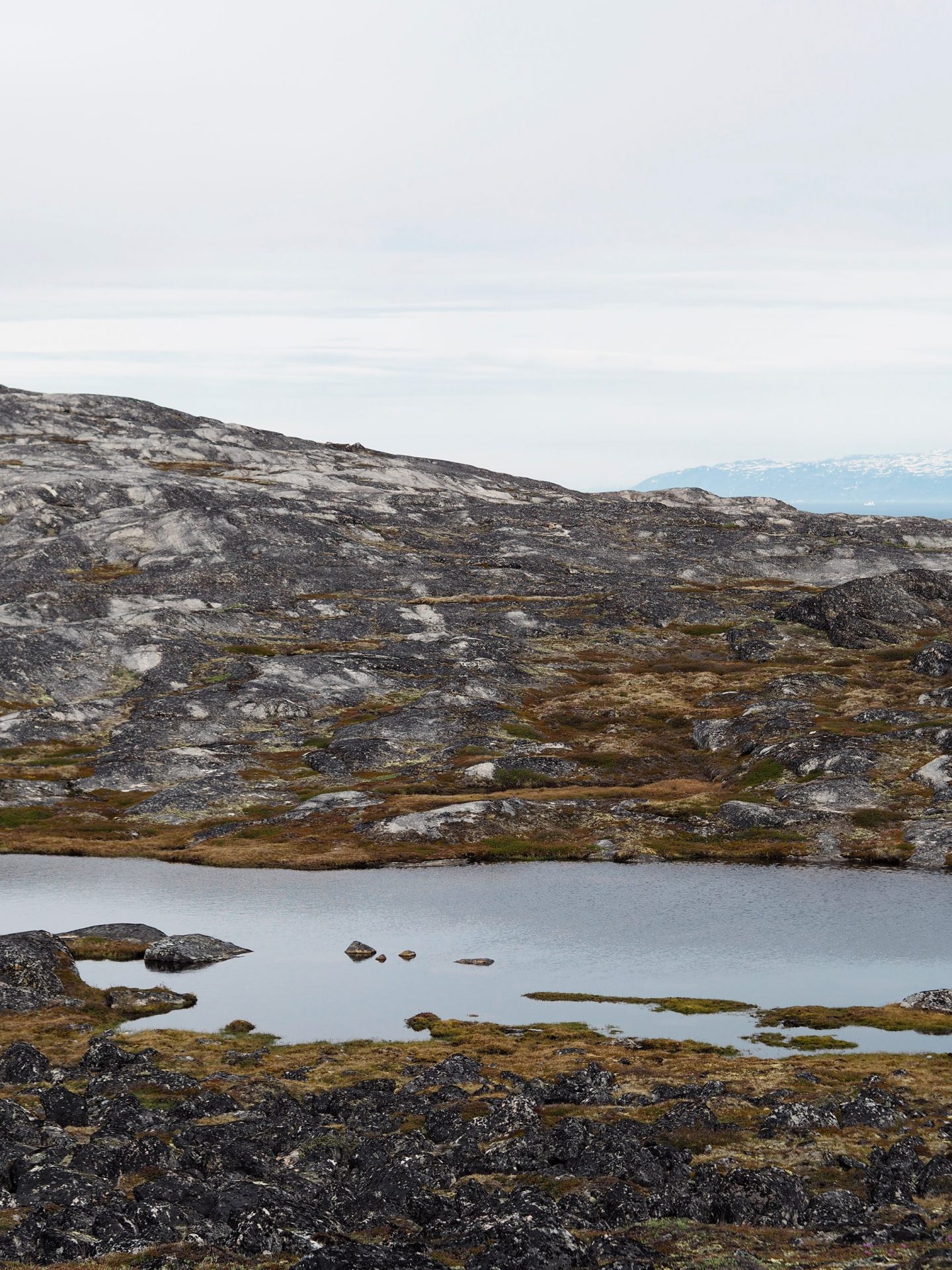
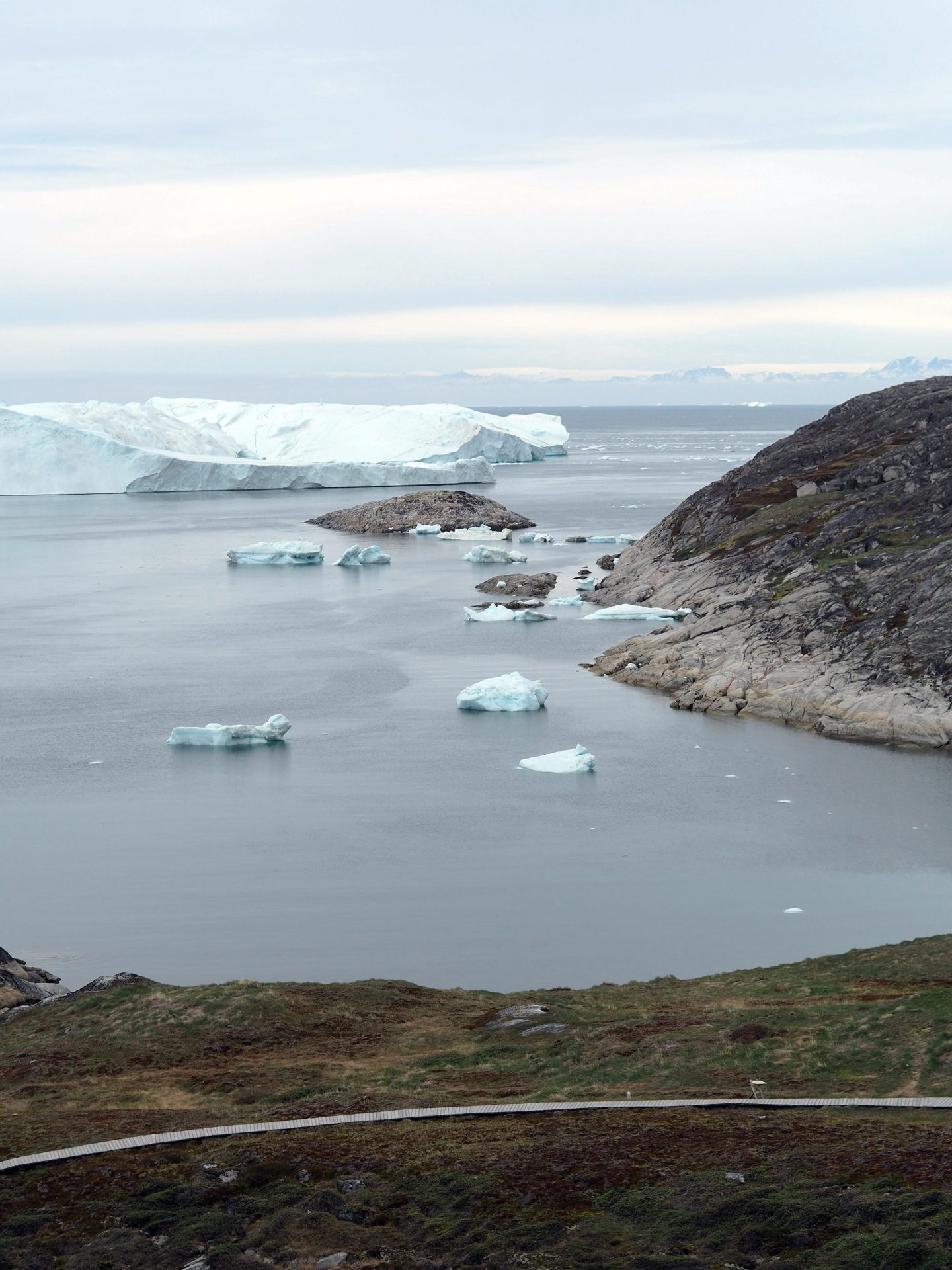
The Ilulissat Icefjord contains the massive Jakobshavn Glacier (Sermeq Kujalleq in Greenlandic), which calves over 35 cubic kilometers of ice in the fjord, and is responsible for producing 10 percent of Greenlandic icebergs. The site was declared a UNESCO World Heritage Site in 2004—the first such site in Greenland—and with this, the vision to create a visitor center that would tell the story of Ilulissat and the Icefjord was born. Funded and developed by the government of Greenland, the Avannaata Municipality, and the Danish philanthropic association Realdania, the project was to serve three purposes: provide knowledge, promote local and national tourism, and function as a meeting place for the community. Over a decade later, the grand vision took shape as an arresting building, designed by the internationally acclaimed Danish architecture firm Dorte Mandrup: the Ilulissat Icefjord Centre.
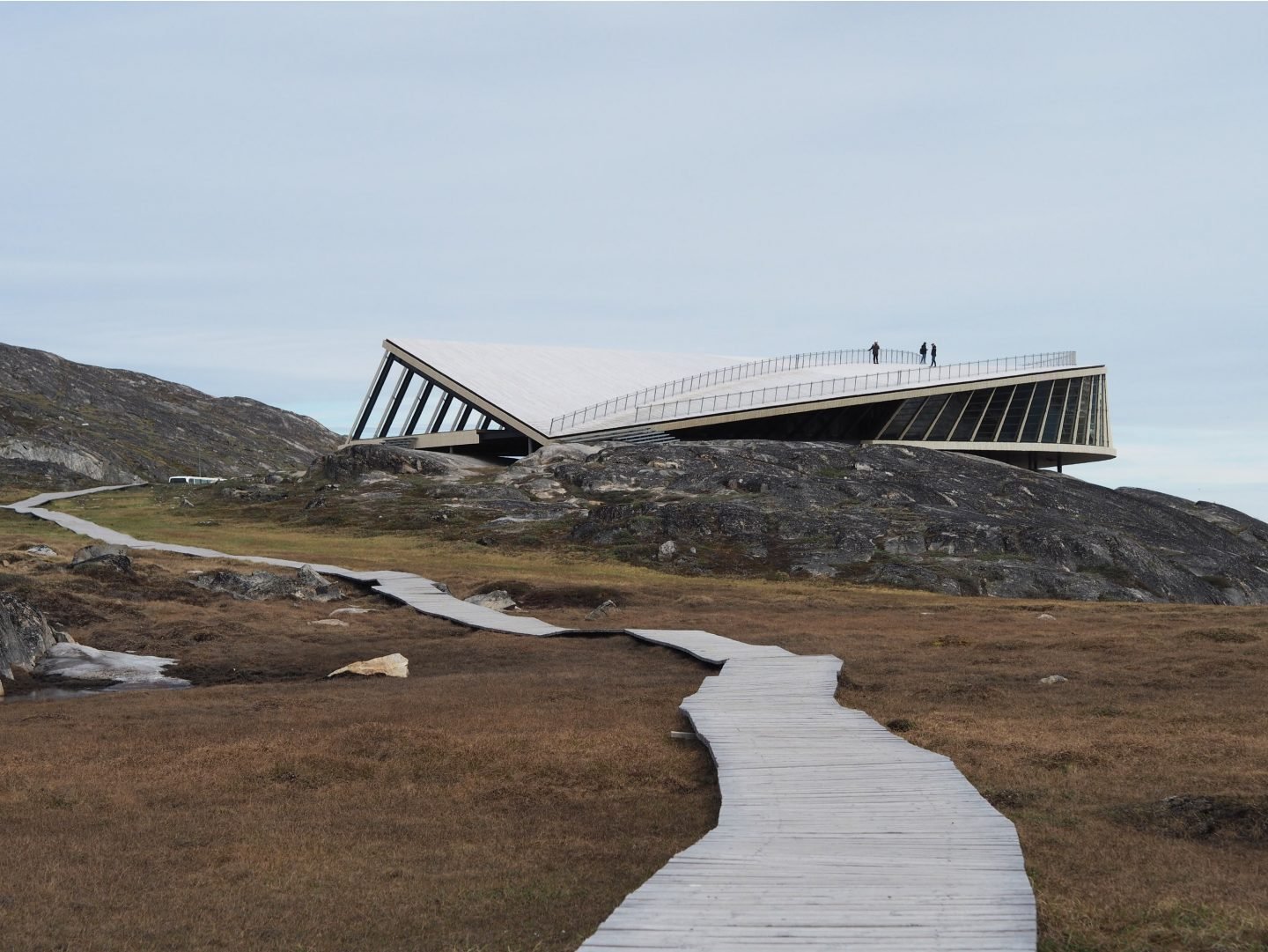
Built in the shape of a boomerang and containing a one-story exhibition space, a cinema, a museum shop and a cafe, the building has become the unofficial arrival site for visitors of Ilulissat. Like many others, we are here on a sunny summer day, a year after its grand opening in June 2021. “Summer is the peak season for the center, but the center stays open all year, even during the pitch black months when tourists are nowhere to be seen,” says Elisabeth Momme, director of the center, who meets us on site. A native Greenlandic, she has been shaping the content of the Icefjord Centre since its inception. Upon entering the building, we are asked, like all visitors, to take our shoes off before entering the space. “In Greenland, everyone traditionally leaves their shoes outside, including invited guests,” she explains, pointing to the dedicated shoe room. A feeling of being at home is instantly instilled. The policy proves to be for a good reason—wearing complimentary felt slippers protects the flooring. And rightly so. The space is immaculate, striking for its elegance, attention to detail, and welcoming atmosphere. We are enveloped by a soft light, tall ceilings and warm textures, and greeted by a soothing smell of coffee—“the best one in town,” Momme is quick to point out.
The space is immaculate, striking for its elegance, attention to detail, and welcoming atmosphere
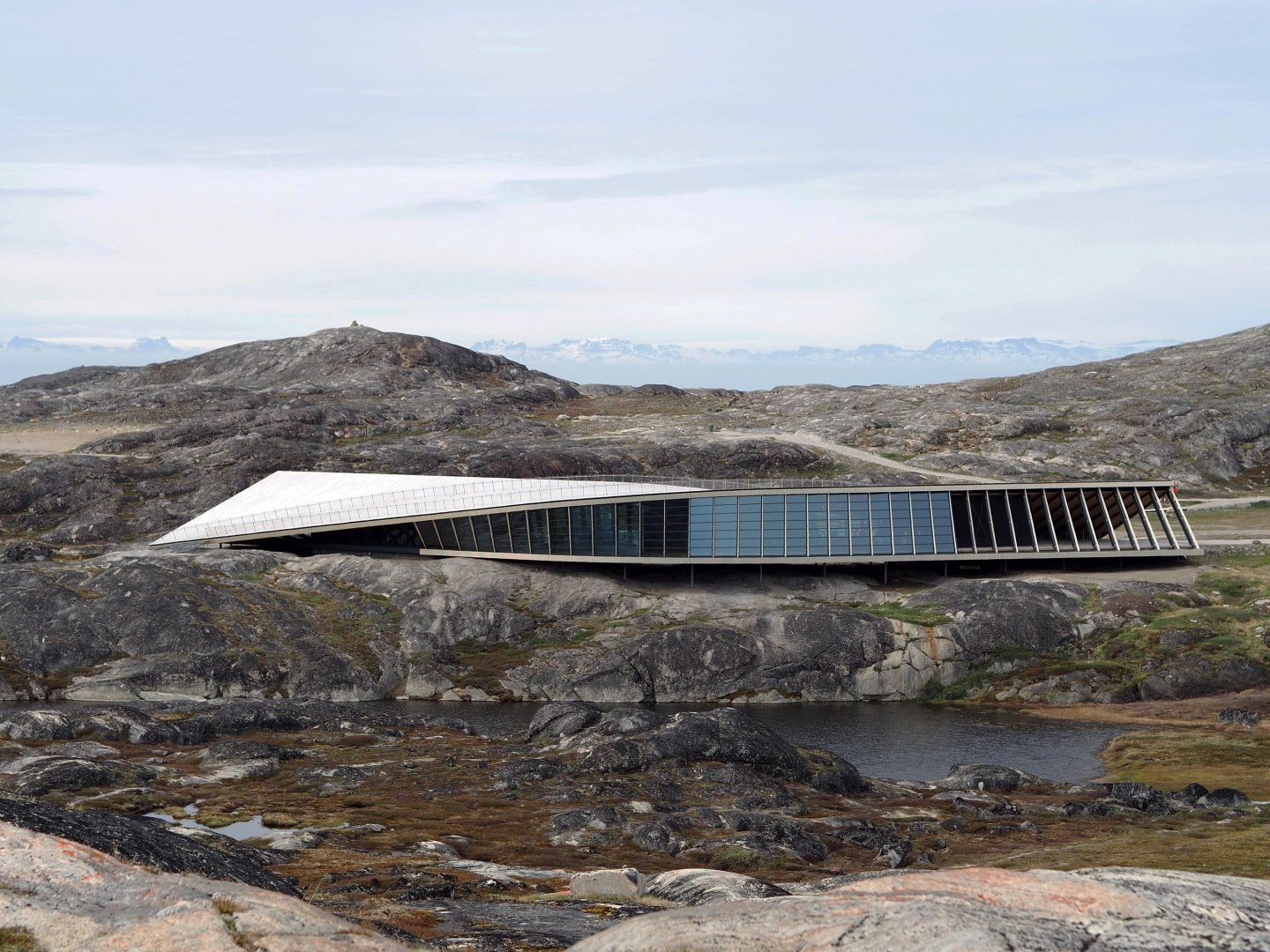
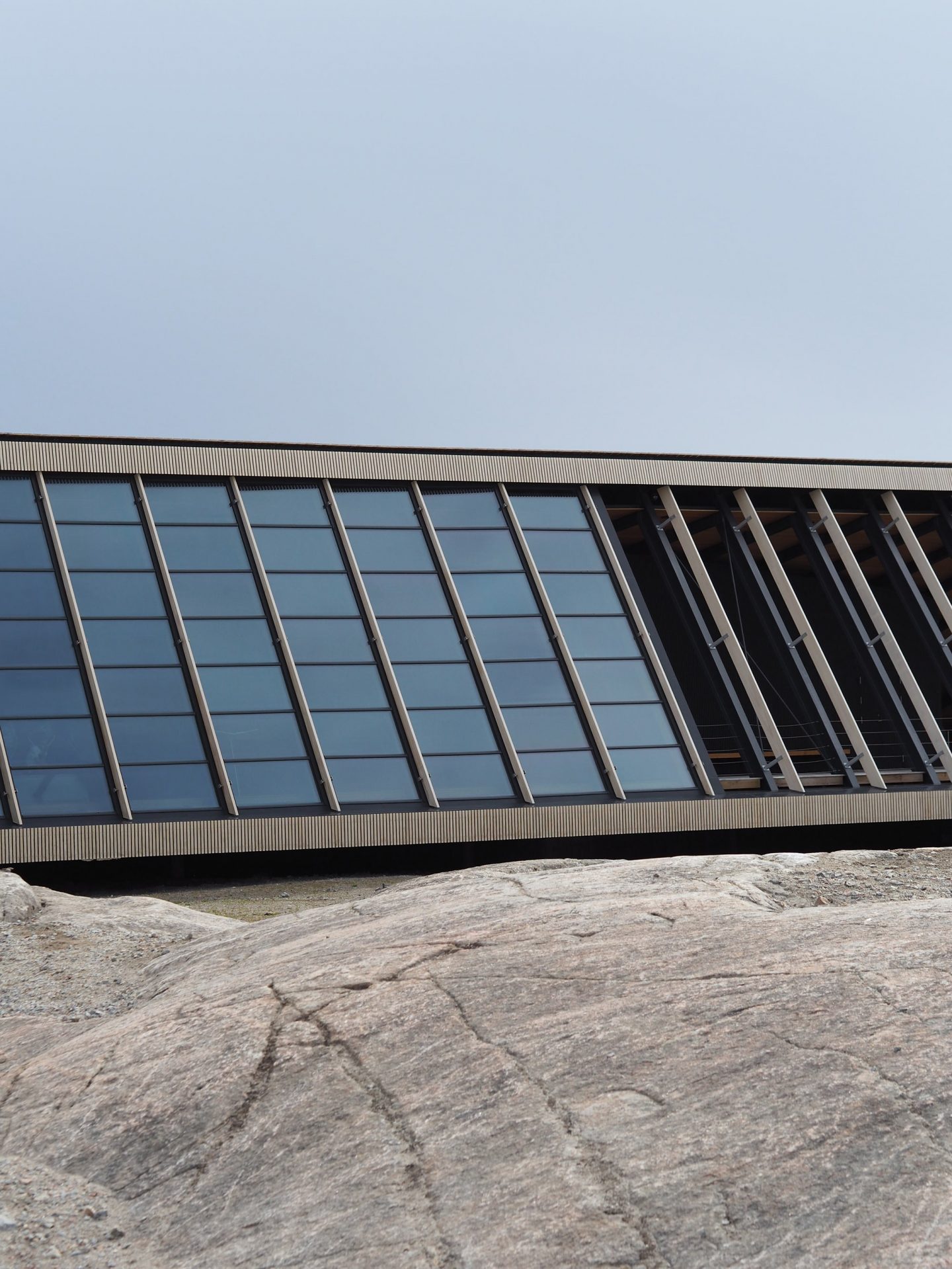
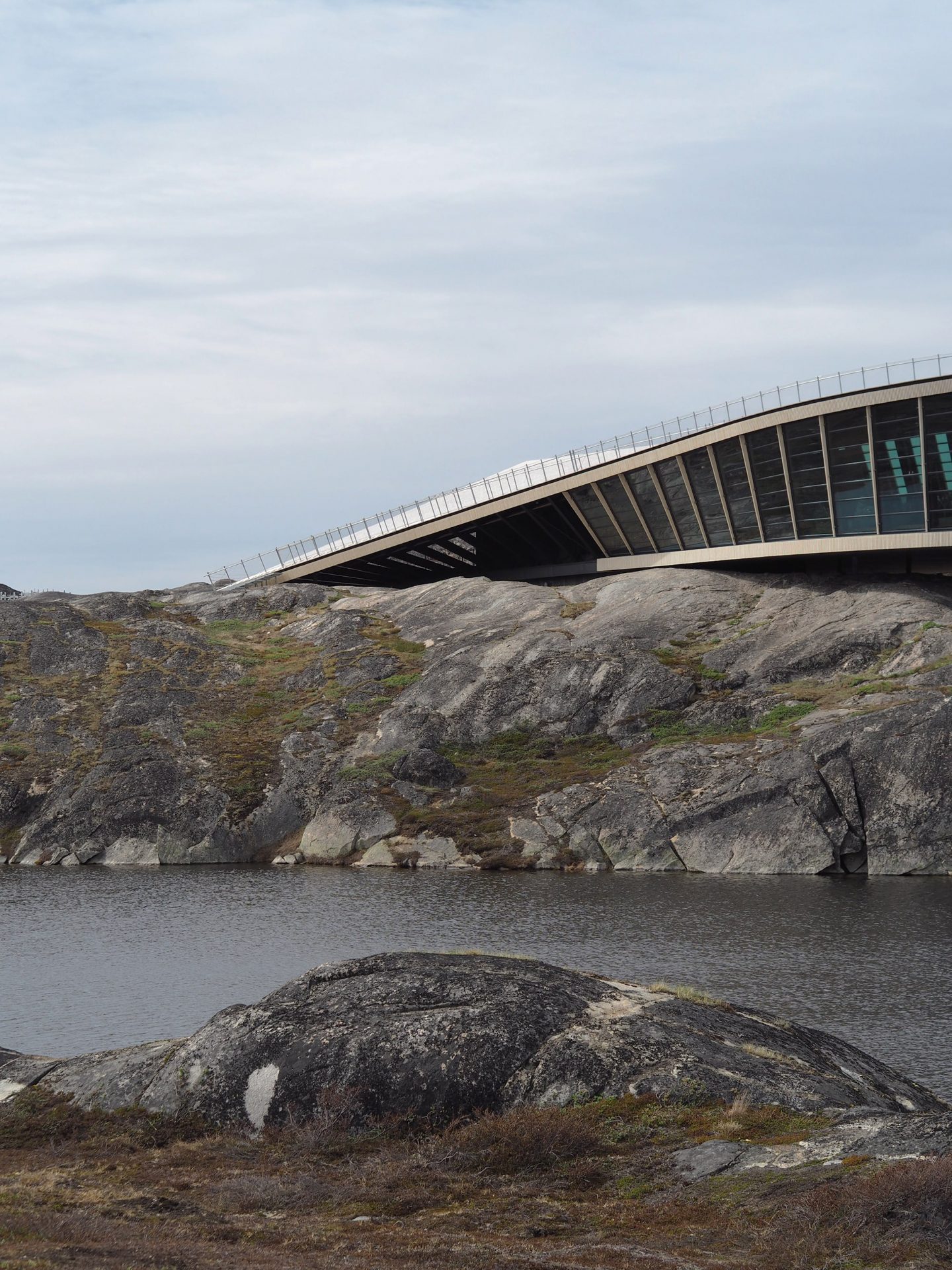
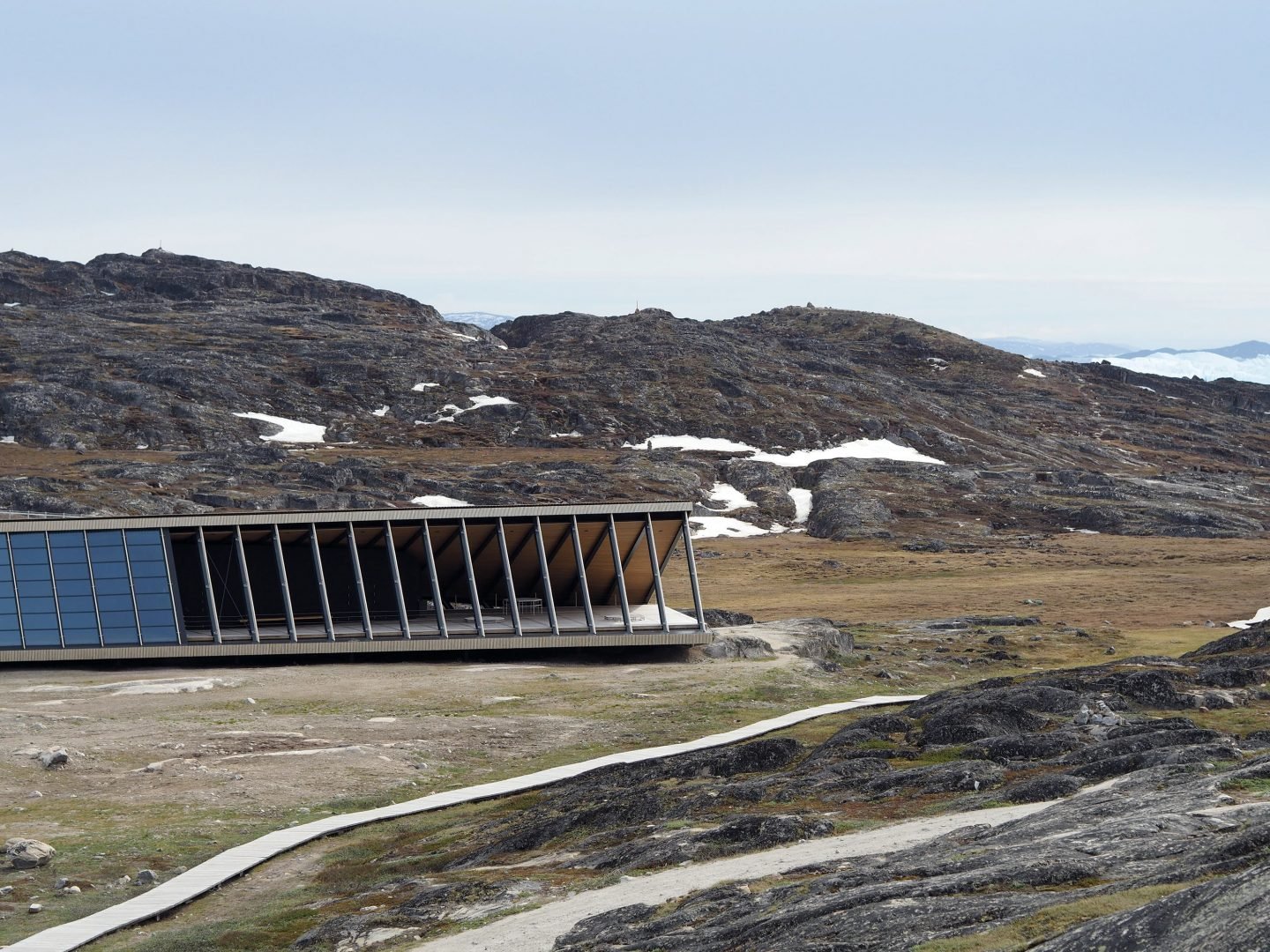
Once inside, it is easy to forget the effort which has gone into its construction. To erect such a building, on the oldest bedrock in the world and in a land so vast yet with so few people, is anything but an easy task. An ambitious project in all components—research, commissioning, designing, and curating—the building set a really high bar for the architects involved. “This is far from a standard building,” explains Momme. Installed in 2019, during harsh winter days when the only light was the gleam of spotlights on the construction site, and temperatures hit 30° below freezing, “the project was a challenging one,” she continues. “All the material, including the steel construction, the glass panels for the facade, and the custom-made battens for the walls and ceilings, were produced in Denmark and later shipped to Greenland. This didn’t really leave room for improvising solutions on-site.” The project also required durability in terms of materiality, with materials carefully selected to mirror the natural environment but also to resist the harsh Greenlandic environment.
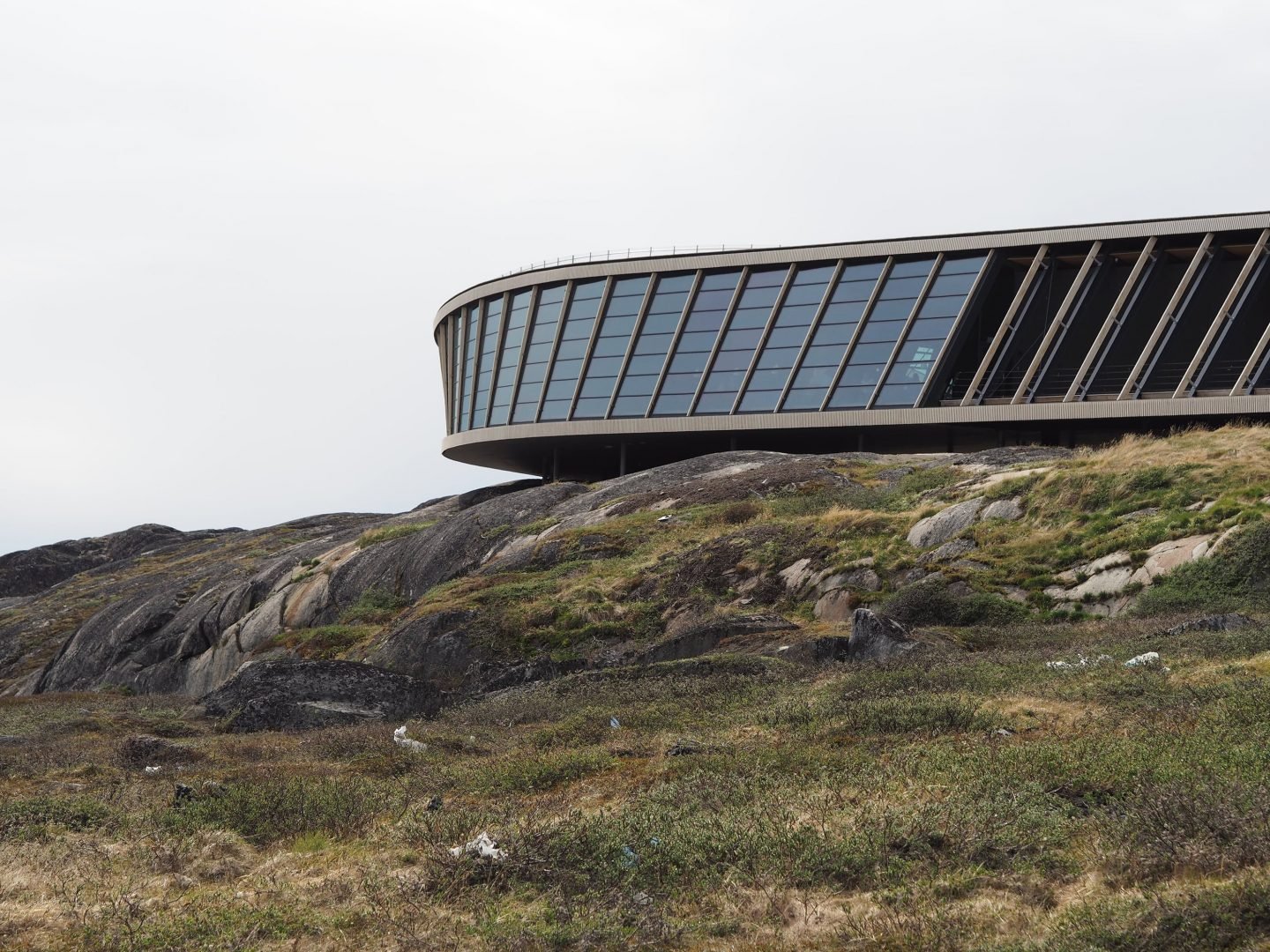
Designed to be sheltered from the freezing winds and the snow build-up, the center has a wing-shaped structure—inspired by a snowy owl with its wings spread out—which levitates on the site on piles. “This gives the visual appearance of floating, but the goal was to minimize the impact on the landscape, letting flora and fauna flourish underneath the structure,” notes Momme. From the beginning of the design process, it was vital for Dorte Mandrup to preserve the surrounding environment. It doesn’t take an expert eye to notice how sustainability sits at the very heart of the design. Everything is consciously designed to deliver an authentic and enhanced experience of the place—one that makes the most of the site yet with minimal impact. “Our basic concept was to design a building that would bring together all the site-specific qualities and both underscore and elevate them,” explains architect Dorte Mandrup. “This is the first time I discovered the role of architecture in relation to nature, which includes providing protection for people.”
Everything is consciously designed to deliver an authentic and enhanced experience of the place
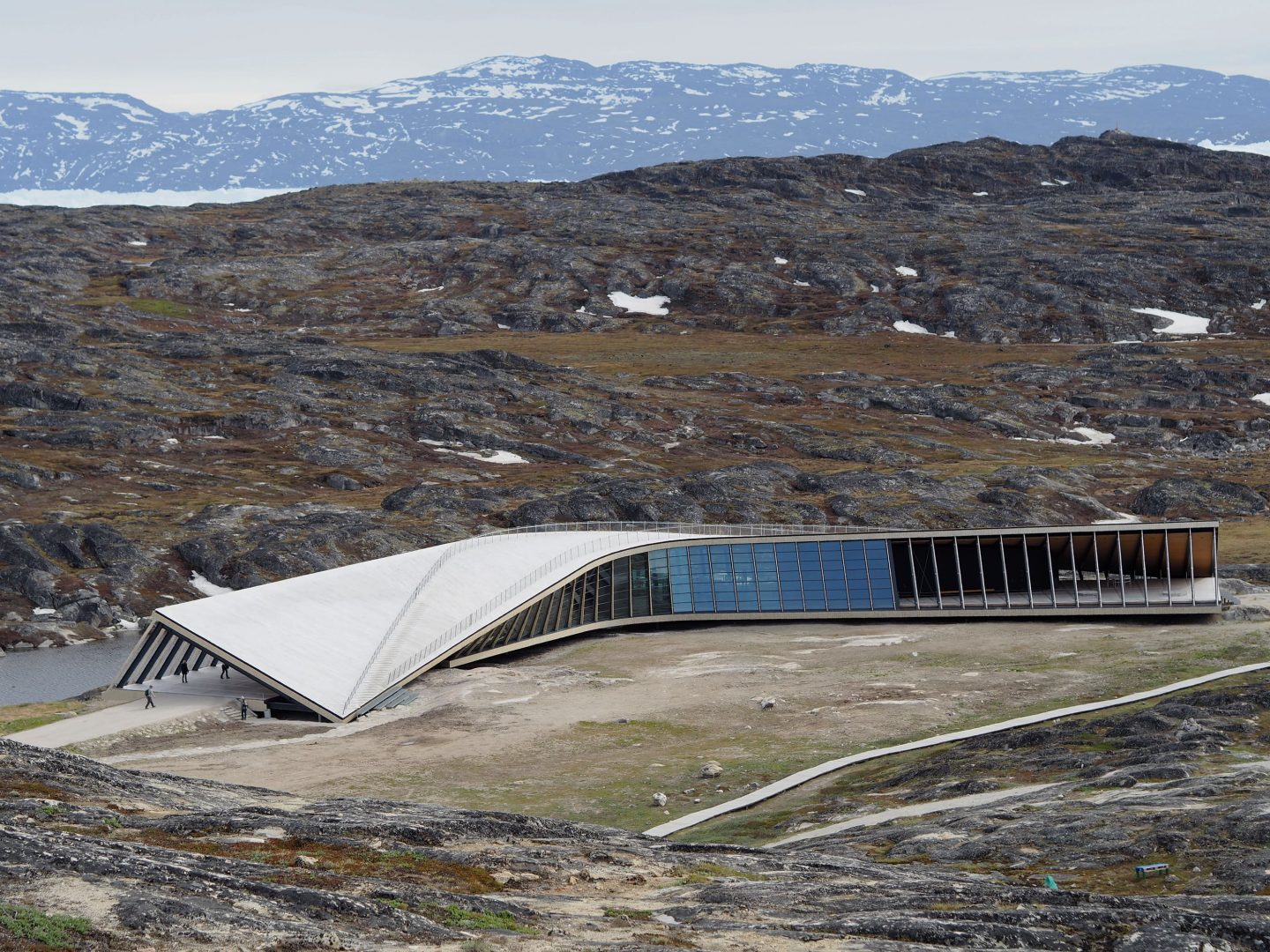
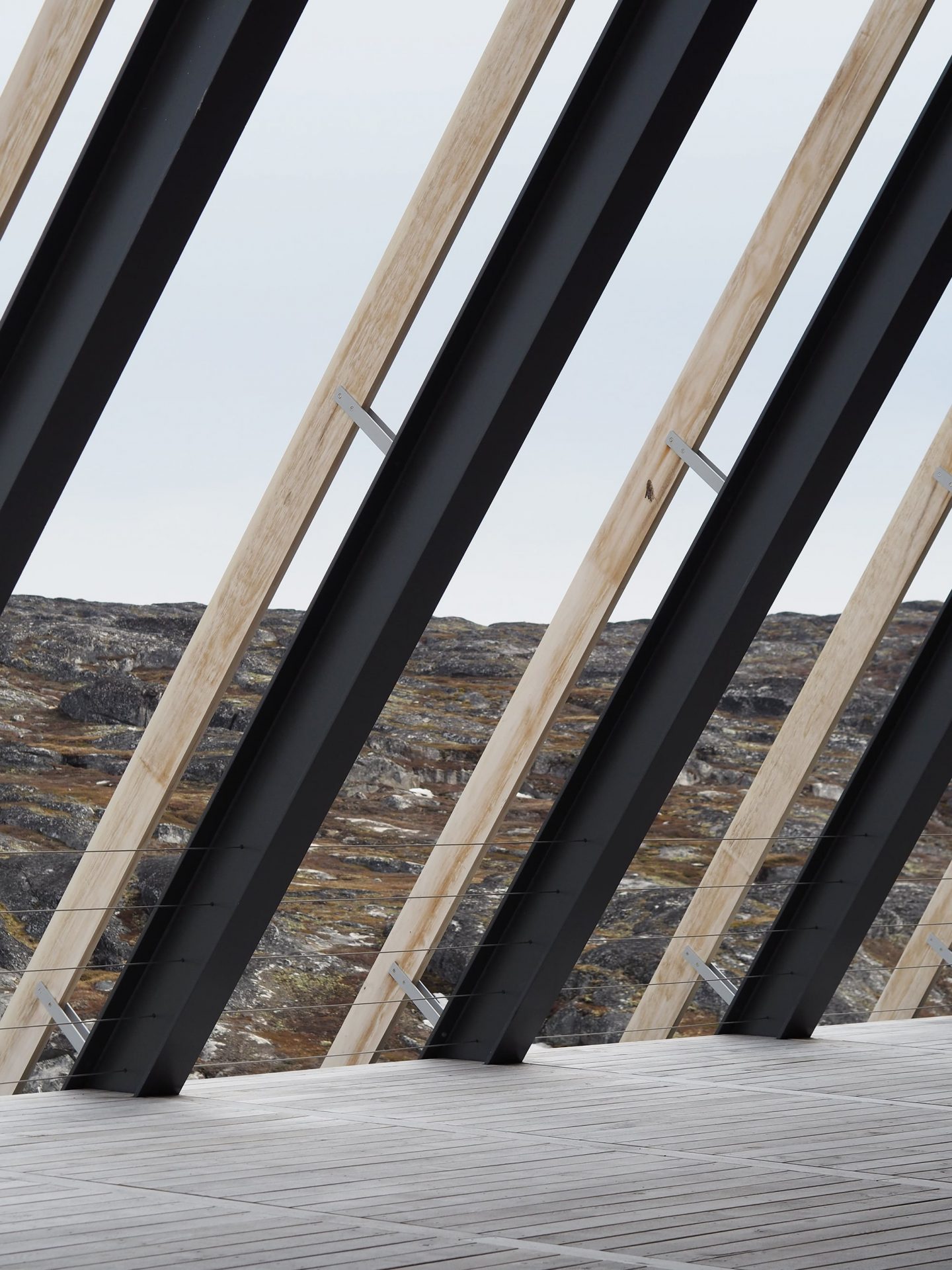
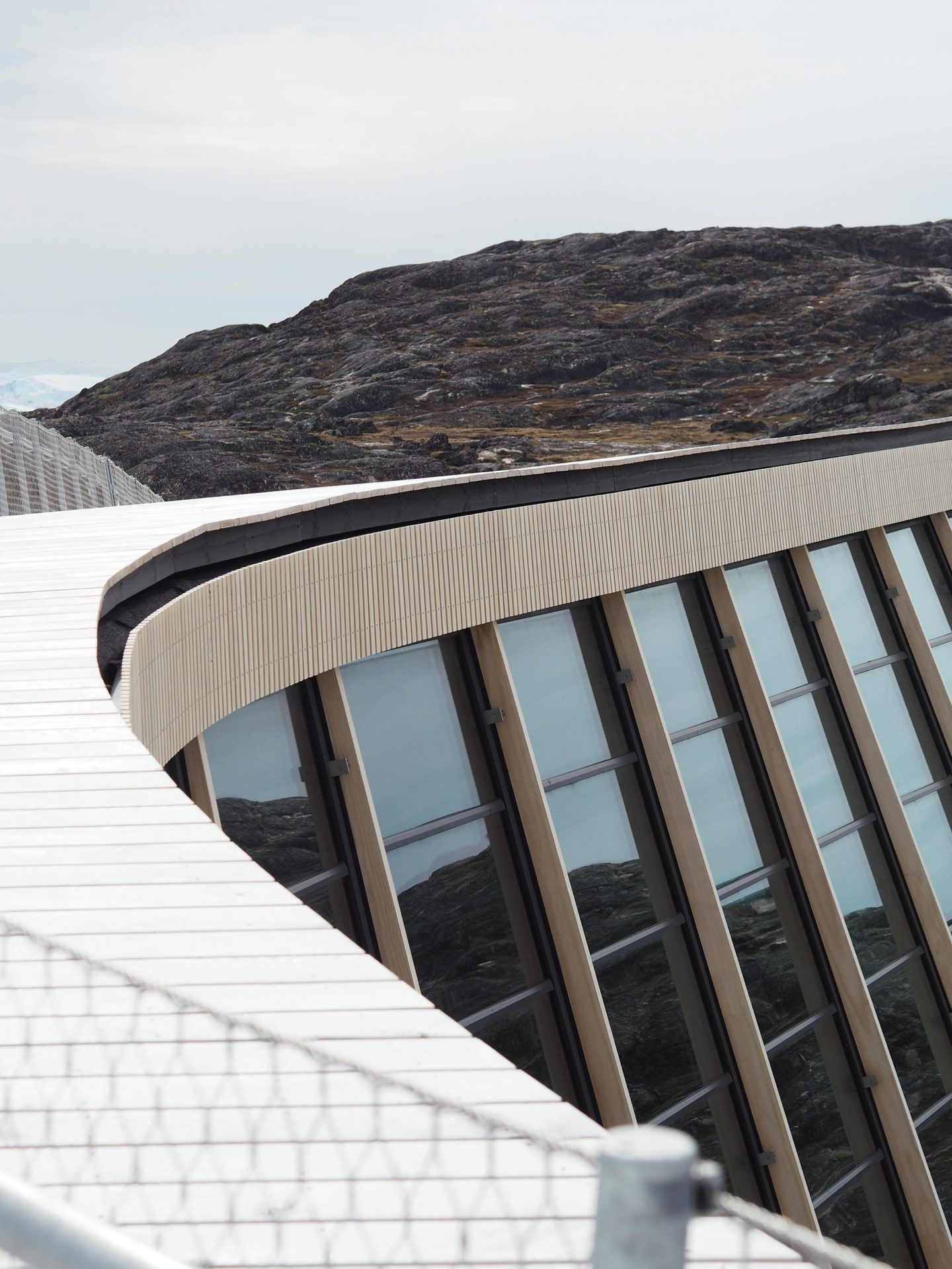
Commanding our attention at the site is the white, elongated roof, which functions as an open terrace and a viewing platform overlooking the Icefjord and Disko Bay, one of the largest bays on the Western coast of Greenland. The rooftop serves as a natural extension of the area’s hiking trail—a sort of bridge between the town and the wild nature ahead. Descending it, one is led into the scenic views of the monumental icebergs in the fjord. “It is a place for everyone. Here, locals and visitors alike can meet, have alfresco dining, take photos, or simply enjoy the view and take in the stunning landscape that Ilulissat is known for,” explains the director, as we walk up and down the passageway. Standing up there, surrounded by incredible natural formations, the feeling is unmatched. At the center, nature is truly felt at every turn, both outside and inside. From the walkable rooftop to the covered outdoor gathering spaces at each end of the building, to the flowing rooms with large windows maximizing views on all sides, a fluid transition between architecture and nature creates an intimate conversation with the Greenlandic landscape—one that cannot help but elevate the already unique spatial experience of the building.
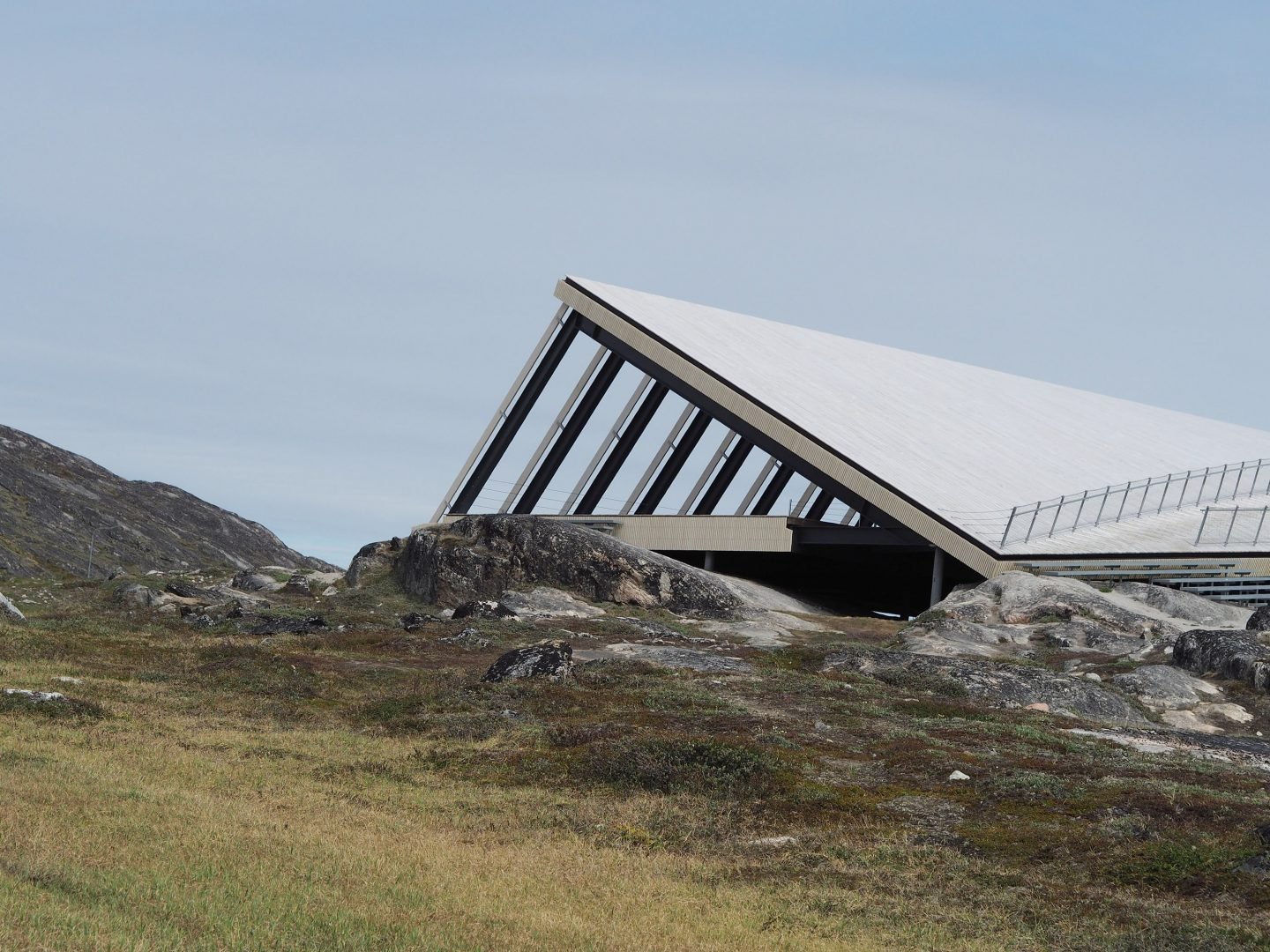
Back inside, materials and art marry seamlessly to take us on a trip across Greenlandic culture, history, and traditions. Titled Sermeq pillugu Oqaluttuaq—The Story of Ice, the center’s permanent exhibition, designed by JAC Studios, is as dynamic as it is captivating. Covering 400 square meters and mainly based on digital and audiovisual elements that stimulate the senses and encourage reflection, it teaches us about the cycle of ice, the rich life on the Icefjord, and the human presence here over thousands of years.
“The exhibition takes you on the journey of the ice crystal from its initial formation and its passage through the atmosphere to its encounter with Greenland, where it becomes part of the ice sheet and eventually makes its way to the glacier,” explains the director. More than a presentation of facts and a moment for quiet contemplation, “the exhibition is also intended to encourage visitors to consider and address issues like the local impact of global climate change, though not explicitly,” she continues. It is no news to learn that the ice cap is melting—a reality that has become undeniable here in Ilulissat, where the 7-kilometer-wide glacier has been the lifeblood of the inhabitants. Its slow retreat has triggered many cultural and economic changes, especially impacting the fishing industry. “The center addresses this very urge,” she continues, “we want people to understand that [climate change] is serious.”
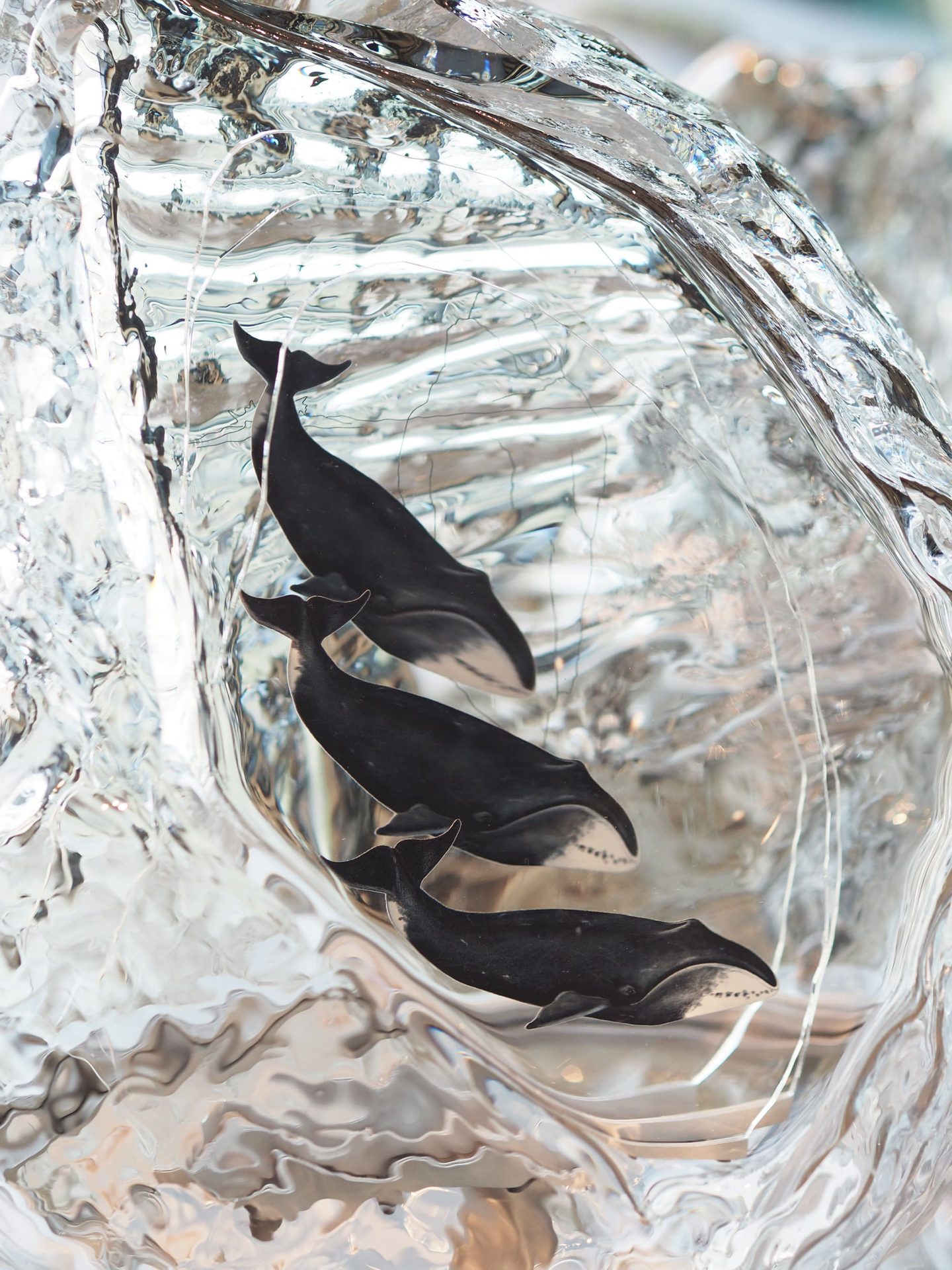
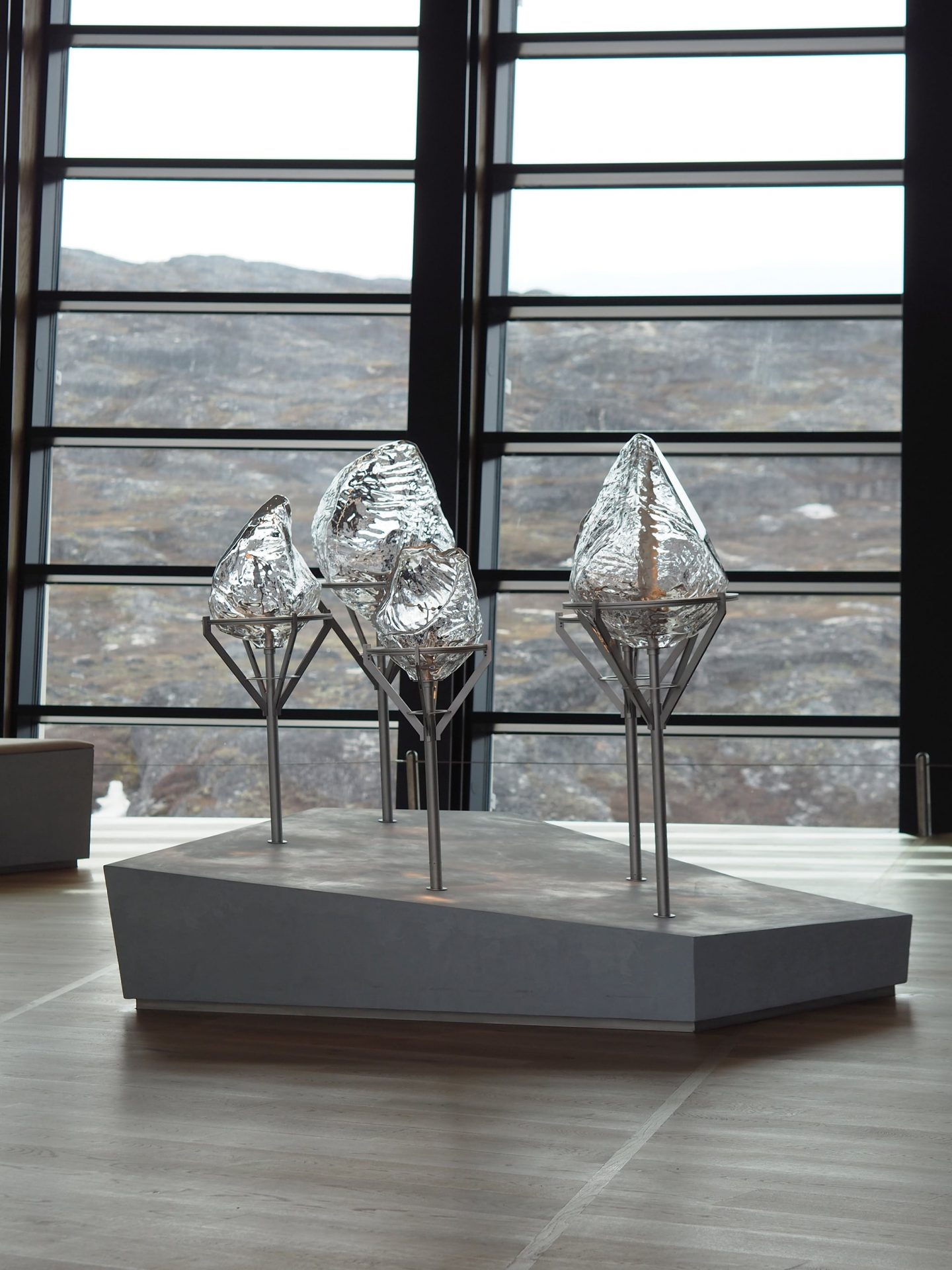
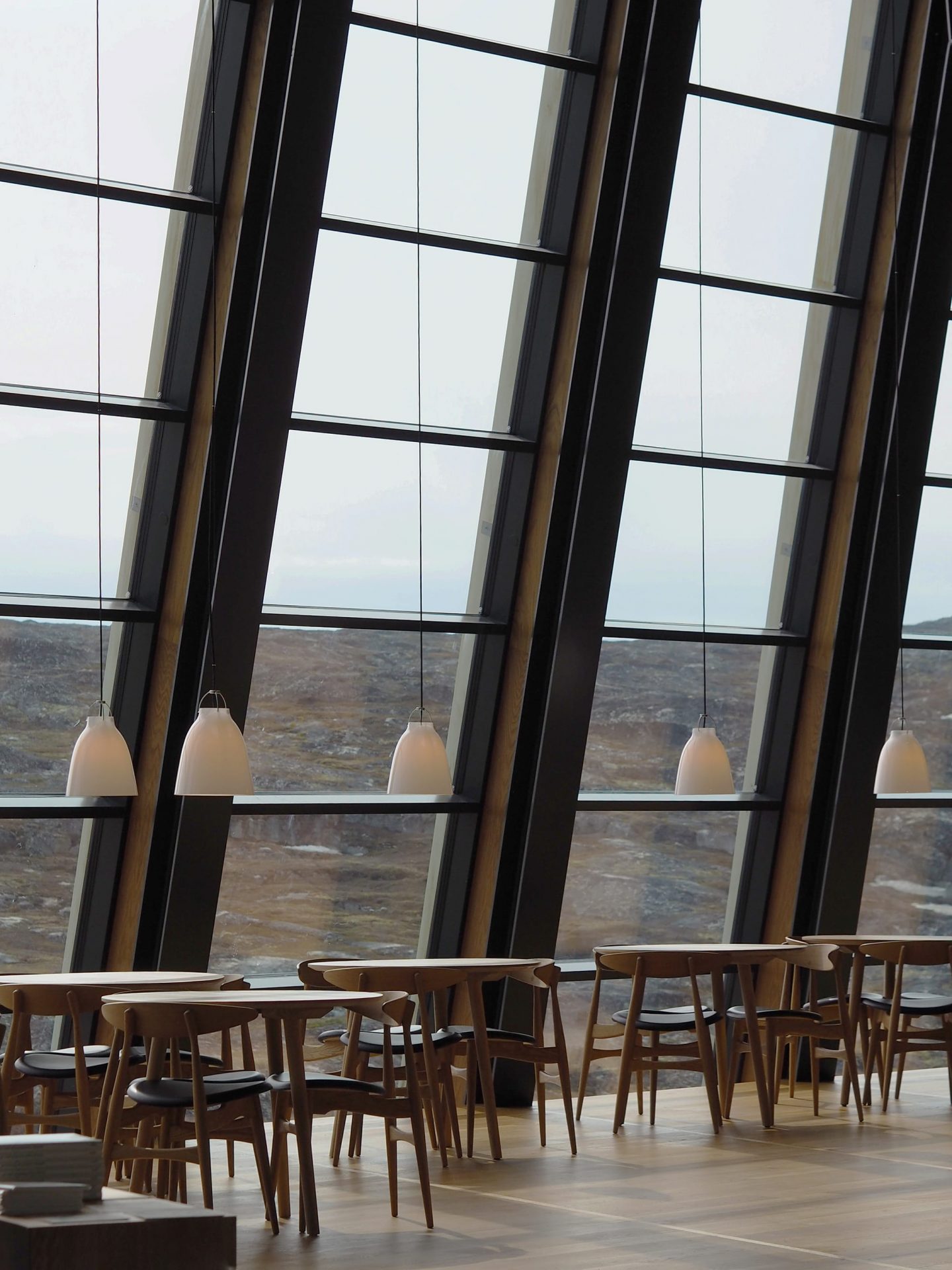
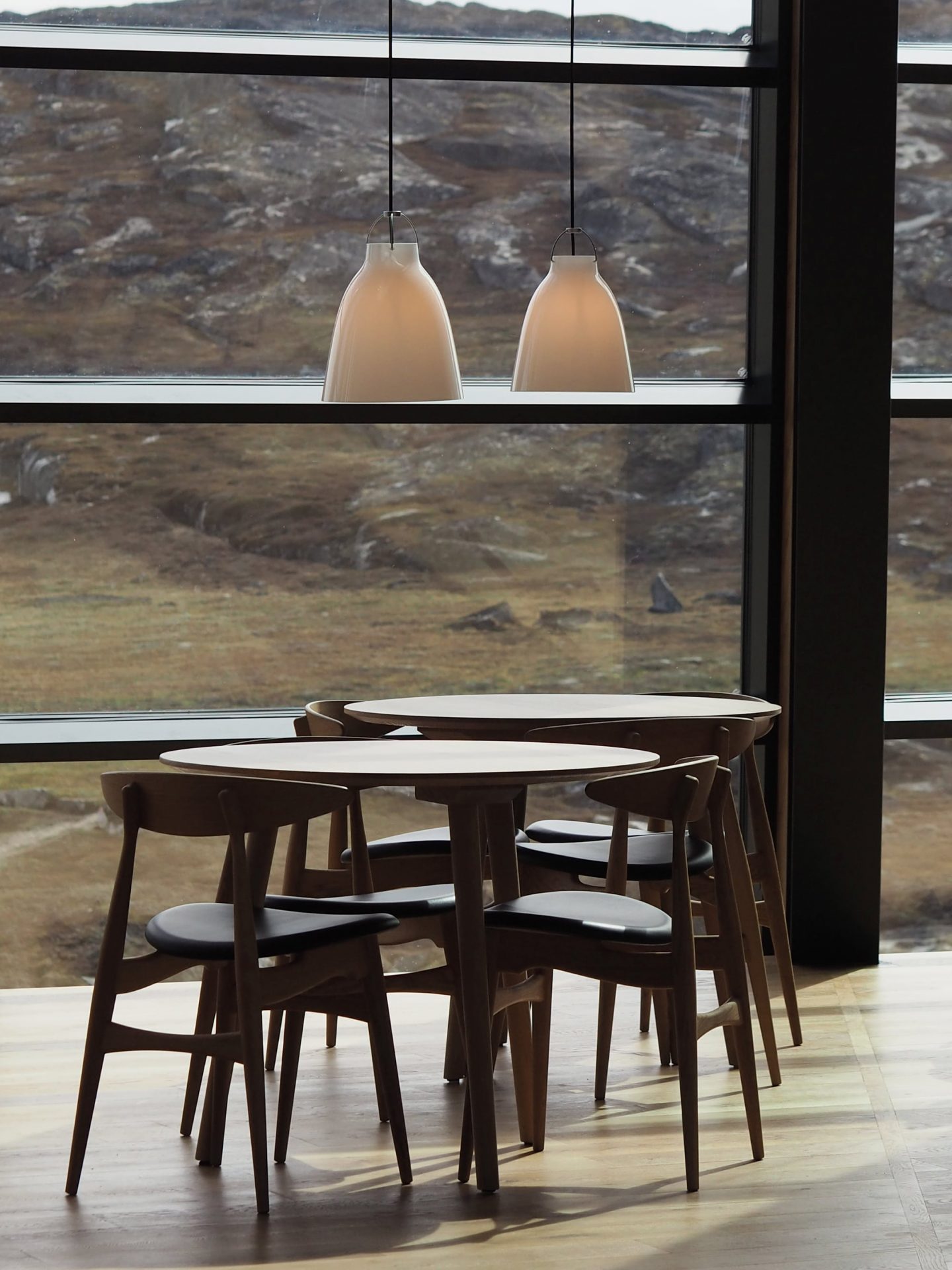
The building aims to spark thoughtful conversation, but above all, it is intended to animate a dialogue between visitors and locals and provide a vibrant and fun social gathering place for all. “The new space has attracted not only architects and design lovers, but also locals. We have created a sort of open house,” the director explains. “It serves as a meeting place for the local community, but also as a stage for research and education, for both adults and children alike.” A unique demonstration of the potential utilization of Greenlandic space, the project is a tremendous success story and model in itself. It is a fitting example of sustainable design thinking, showcasing exquisite cooperation and integration—two values at the very root of Greenlandic culture.
At once audaciously international but also distinctively Greenlandic, “the building unites us, and reflects our stories and cultures,” continues the director. “All we wish for is to be a part of a positive development and give something to the town. We see ourselves as a gift, and I think the townspeople share this view,” she adds. To us, the place is already a gift: a newly instilled sense of hope for climate awareness to shift, and for Greenland to continue to evolve with it. As we leave the center to make our way to the hiking trails, we already know that we will return here soon. After all, knowledge is endless, and so is the beauty that awaits inside and outside this staggering building.
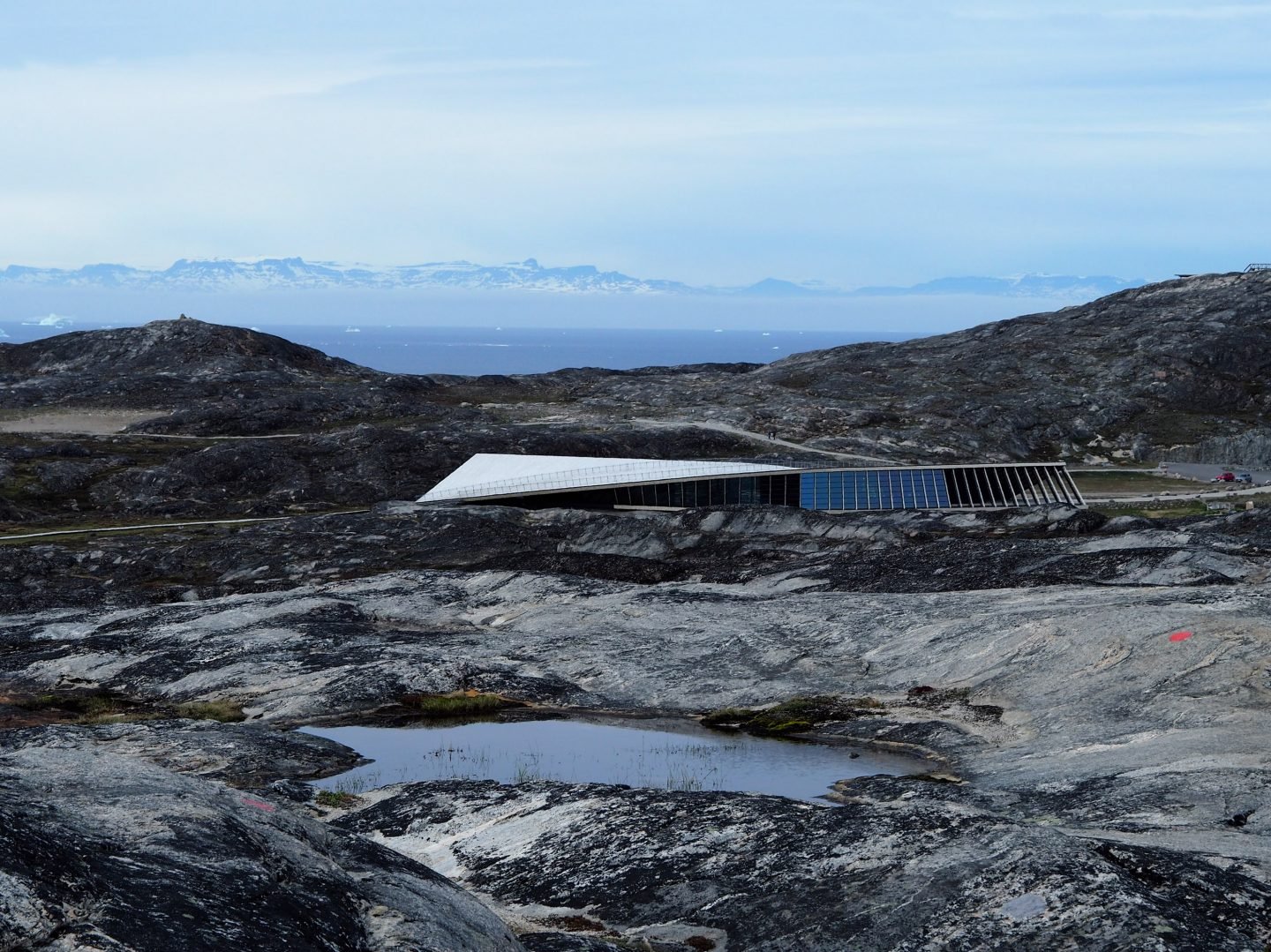
All images © Devid Gualandris
